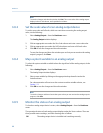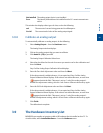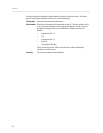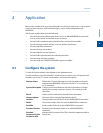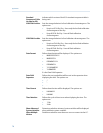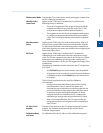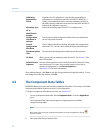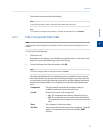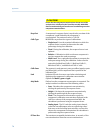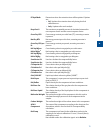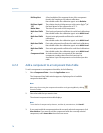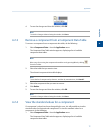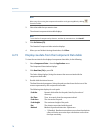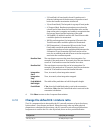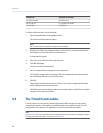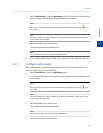Special offers from our partners!

Find Replacement BBQ Parts for 20,308 Models. Repair your BBQ today.

CAUTION!
Ensure that the component retention times do not exceed the
analysis time, as defined by the Timed Events table. MON2020
does not automatically prevent the user from defining excessive
component retention times.
Resp Fact A component’s response factor is equal to the raw data of the
component’s peak divided by the component’s
concentration. The maximum value is 1.0E+38.
Calib Type MON2020 can perform four types of calibrations:
• Single-Level - Uses the standard calibration in which the
response factor is needed to determine the mole
percentage during the calibration.
• Fixed - During the calibration, the response factor is not
updated.
• Relative - Calibration in which a reference component is
used to compute the mole percentage.
• Multi-Level - Uses a polynomial equation to compute the
mole percentage during the calibration. Values must be
entered in the Mult-level Calib ‘a’, Mult-level Calib ‘b’,
Mult-level Calib ‘c’, and Mult-level Calib ‘d’ cells.
Calib Conc The amount, in mole percent, parts per million (ppm) or parts
per billion (ppb), of the component that is present in the
calibration gas.
Unit Indicates the unit of measure used when calculating and
displaying the component’s calibration concentration.
Options are Mole%, ppm and ppb.
Anly Meth Defines how the component concentration is computed. The
analysis method can take one of the following values:
• Area - Calculates the component concentration by
dividing the peak area by the response factor.
• Height - Calculates the component concentration by
dividing the peak height by the response factor.
• Fixed - The component concentration equals the
component's calibration concentration displayed in the
Calib Conc column of the component data table. No
calculation is performed using the response factor.
• Analog Input - The GC reads the analog input channel,
scales the raw milliampere value to engineering values
that were set in the Analog Inputs window, and uses this
value as the component concentration. No calculation is
performed using the response factor.
RT Secs Dev The maximum acceptable deviation time, in seconds, of the
new retention time from the current retention time.
Application
74



